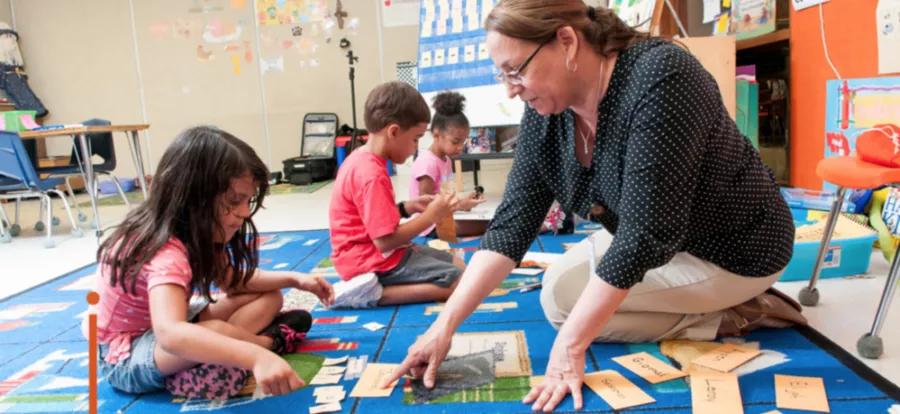 The National Education Association (NEA) is advocating for schools to shift to a workload analysis model for special education professionals that would more fairly measure their growing responsibilities today and the heightened intensity of their work.
The National Education Association (NEA) is advocating for schools to shift to a workload analysis model for special education professionals that would more fairly measure their growing responsibilities today and the heightened intensity of their work.
The model would replace the traditional caseload structure that is based on the number of students with Individual Education Programs (IEPs) that are assigned to each educator, which critics say does not adequately account for a shift toward more consuming inclusionary practices and mounting pressure to meet academic standards.
“This is important to special educators because we want to provide the best academic and social emotional support for our students,” says Sharon Schultz, a former teacher, administrator, and professor in special education who has worked extensively on the model through an NEA resource cadre addressing issues related to the Individuals with Disabilities Education Act. “In order to do that, we need to have the appropriate amount of time or it is impossible to meet student needs.”
The model, detailed in an NEA backgrounder report, notes that workload data takes into consideration the direct and indirect services and supports provided by special education professionals through specially designed instruction.
“Given the transition to more inclusionary practices such as co-teaching and supported instruction in the general education setting, thinking in terms of workload more accurately addresses the service demands of special education teachers, paraeducators, and specialized instructional support personnel,” the report says.
The model spells out the responsibilities that should be considered in order to accurately measure their workload, including both direct instruction and a wide range of indirect services that are specific to each student. They include inclusionary practices such as co-teaching, supported instruction and “push-in” or specialized services, along with multiple responsibilities related to management of IEPs.
It also recommends a three-step process for assessing workload considering minutes devoted to caseload, inclusionary practices and IEP management. It suggests that a desirable allocation of time be developed based on available instructional minutes per week, and a determination be made about whether enough time is available.
It also provides two examples of the workload calculation, for both a “desirable” and “typical” special educator workload. Under ideal circumstances a special education staff person would have about an hour available for consultation with parents, emergencies or other unplanned work, but the report indicates that in a typical setting they actually are expected to devote significantly more time to assigned responsibilities than they have available – nearly six hours in a week.
“This model allows educators to have a framework to analyze their workload and a tool to advocate for their profession, whether it’s for more time for preparation or instruction or even to advocate for hiring additional personnel," says Katherine Bishop, a veteran special education teacher who also has served on the NEA cadre working on the issue for several years.
Bishop, who is vice president of the Oklahoma Education Association, says while the problems stem from the structure of the caseload calculation and growing responsibilities growing from increasing inclusion, a shortage of qualified special education teachers and a lack of funding for hiring has exacerbated issues for special educators.
“The reality of a teacher shortage in many states becomes front and center for our most vulnerable students,” she says. “Not having time to prepare or instruct and provide students with the specialized instruction they need is the reason many professionals are leaving the field of special education. We have to attract aspiring educators into the field, and then provide them with the pay, support and resources they need.”
Schultz agrees, and says that the new model should be promoted with state and district officials.
“Changes are needed at both levels, but realistically, the district level is where the action is,” she says. “When a district understands and embraces this workload model there often is more lasting positive change that survives into the future.”






